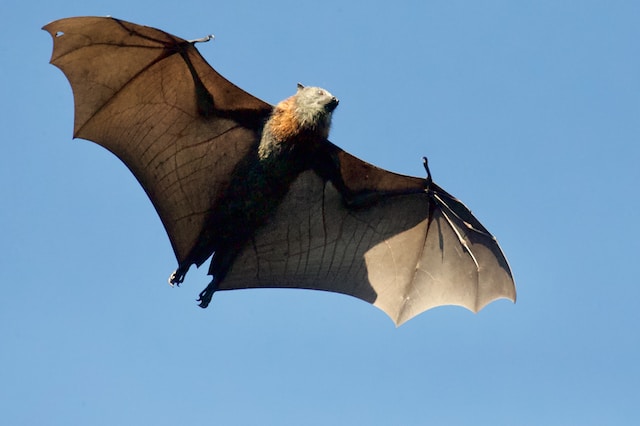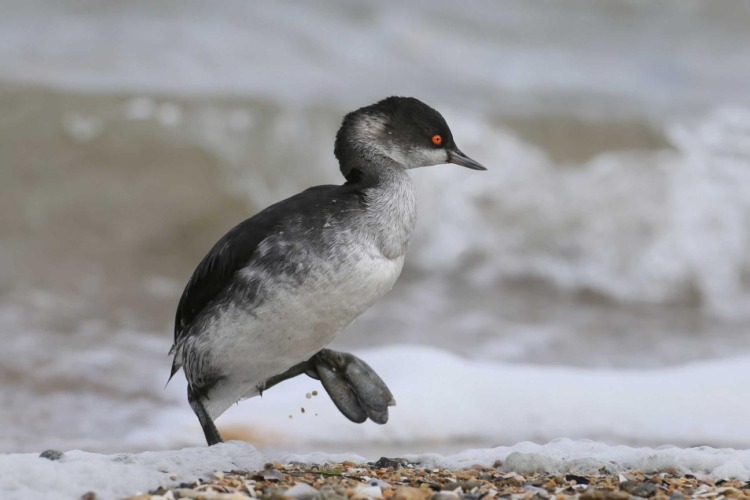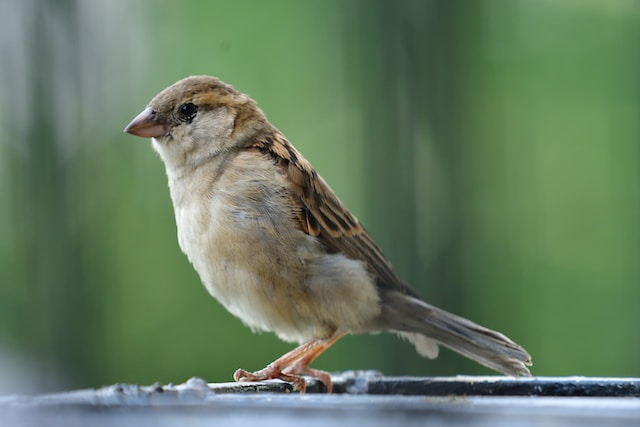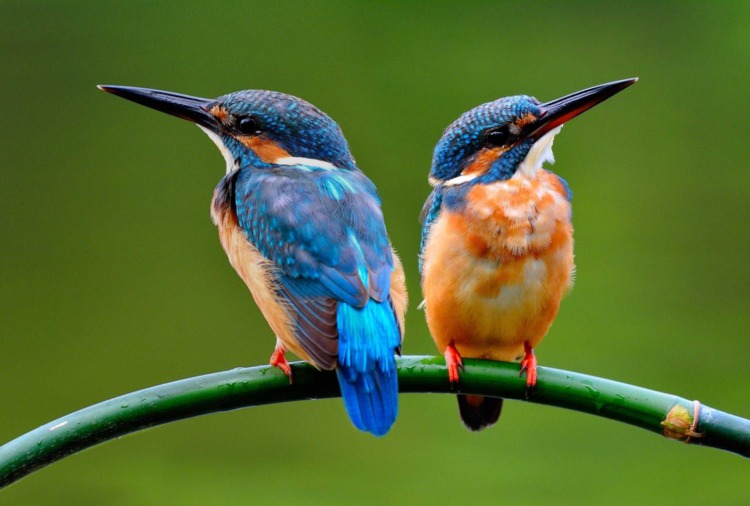Ever stumped by this fun riddle – “What animal has two feet but can’t walk?” Did it leave you guessing? If so, get ready for a fun wild ride.
In this article, I am about to solve this puzzle for you, and in the process, you will discover many amazing fun facts about the animal world.
What Animal Has Two Feet But Can’t Walk?
The short, straight answer is, Many! Yes, you read that right! There are actually many animals with two feet that can’t walk! This is because the structure of their feet and legs has evolved to survive in different surroundings and perform different functions. To better understand this, let’s dig deeper.
Bipedal Animals

Bipedal animals, as the term suggests, move primarily using two legs and take turns to step forward. It’s different from ‘quadrupedal locomotion,’ where animals move using all four legs.
Some of the most common examples of bipedal animals include:
- humans
- birds
- kangaroos
- some species of dinosaurs
Now, the advantages of bipedal locomotion are many. For instance, it allows for better visibility over tall grasses, grip things, or spot potential predators or prey. For humans, as an example, bipedalism has freed our hands to carry things or use tools.
See Related: Fastest Animals in the World
List of Animal That Has Two Feet But Can’t Walk

While bipedal animals mainly move on two legs, not all of them can walk. For instance, some hop, skip, or run, while others waddle or even slide. It just goes to show the many different, clever ways animals have changed to fit into their habitats.
Here is a list of animals that have two feet but can’t walk:
Bats:

First up, we have bats. They belong to the only group of mammals capable of sustained flight. They have two feet, but their structure is adapted for clinging to surfaces rather than walking.
Bats’ hind limbs, or feet, are quite small and designed to grip onto surfaces. This is perfect for hanging upside down in dark caves or crevices during their daytime slumber. However, try to imagine a bat walking, and you will soon realize it is not a sight you will come across in nature!
NOTE: While most bats can’t really walk, there are two species that can. One of them is the Lesser Short-Tailed Bat, also known as the burrowing bat, from New Zealand. This bat can walk or crawl on the ground, as well as fly. Another bat that can walk is the vampire bat. But remember, these are special cases, and most bats can’t walk on the ground.
Penguins

Next up, we have penguins on our list of what animals have two feet but can’t walk. These flightless birds are renowned for their charming waddle.
Penguins have two sturdy feet but can’t walk in the traditional sense. Instead, their primary modes of locomotion on land are waddling and tobogganing.
Penguins’ feet and legs are positioned far back on their bodies. This allows them to stand upright but also gives them a slightly awkward gait.
When it comes to tobogganing, penguins slide on their bellies, propelled by their feet and flippers. This form of locomotion is not only faster than waddling but also conserves energy, which is crucial in their harsh, icy habitats. Some species, like rockhopper penguins, use their feet to jump from rock to rock rather than walk in the traditional sense.
See Related: Most Interesting Birds in the World
Loons and Grebes

Loons and grebes are another example of two-legged creatures that can’t walk. They are aquatic birds that have specialized feet. Just like penguins, they also have webbed feet that are adapted for swimming rather than walking.

Furthermore, their legs are also located far back on their bodies to maximize their diving prowess. This makes them agile swimmers and hunters underwater but leaves them clumsy on land.
Both loons and grebes are known for their awkward, shuffling walk. However, they rarely spend time on land except during nesting. Their unique body structure is an excellent example of how evolution shapes animals for survival in their specific habitats.
Swifts

Swifts are small, agile birds known for their impressive aerial abilities. They have tiny, weak legs, not designed for walking but for clinging onto vertical surfaces like cliffs or trees.
Swifts spend most of their time in the air, catching insects on the wing and rarely walking on the ground. They even eat, sleep, and mate while airborne! Generally speaking, swifts only land to nest and raise their young.
See Related: List of Animals That Mate for Life
Hummingbirds

Hummingbirds are well known for their ability to hover in mid-air. These colorful birds also have two smaller feet but use them to perch on trees rather than walk on the ground. Their feet are so small and weak that walking or hopping, like many birds, is physically impossible.
Basically, hummingbirds are highly skilled flyers and spend most of their time in the air, darting between flowers in search of nectar.
Sparrows

You might be surprised to see sparrows on this list, but while these small birds have two feet, they don’t really walk. Instead, sparrows typically hop, a form of locomotion quite common among small bird species, except hummingbirds. So while it might seem like they’re taking tiny steps, they’re actually jumping with both feet at once!
See Related: Animals That Have Become Extinct in the Last 100 Years
Kingfishers

Next up, we have kingfishers on our list of what animals have two feet but can’t walk. These colorful birds are most often seen perched above water bodies, watching for fish.
Like hummingbirds and swifts, kingfishers have legs more suited for perching than walking. While on the ground, their movement is more of a shuffle or hop than a proper walk.
Snakes
Now, you might be thinking, “Snakes with feet? That’s absurd!” But it’s a fun fact that snakes technically have ‘two feet.’ Of course, they don’t have feet in the traditional sense, but they carry remnants of hind limb bones from their legged ancestors. These vestigial structures are tucked away inside their bodies or internal organs and serve no purpose in locomotion.
Pythons and boas are modern snakes that are remnants of a group that once had limbs. Over time, their limbs regressed, leaving behind tiny vestigial hind leg bones buried within their muscles. But these leg bones are not functional, and pythons and boas can’t walk using them.
However, in 2017, a jaw-dropping surprise emerged from India – a cobra snake with two legs! Unbelievable, right? Watch this video:
See Related: Different Snakes in West Virginia
Newborn Human Babies

Now, let’s add a little humor to the riddle answer!
We already know that humans are classified as social animals. So, by that logic, wouldn’t newborn human babies also fall into the category of animals? And how many legs do newborn babies have? Two, right? But can they walk? No, they can’t!
It takes months for a human baby to develop the necessary strength, coordination, and balance to take their first steps. Until then, they remain the cutest examples of two-legged animals that can’t walk.
See Related: Are Humans Animals?
Frequently Asked Questions:
Are There Any Other Animals That Have Two Feet But Cannot Walk?
To the best of my knowledge, no other animals with two feet can’t walk at all. However, some interesting cases of animals have limitations in their walking abilities. For instance:
> Kangaroos and Emus: While they can walk forward, they have difficulty walking backward. Their strong hind legs are well-adapted for hopping and running, but the structure of their legs makes backward movement challenging.
Additionally, people often mistake kangaroos for animals that have two feet but can’t walk. However, I have found that kangaroos can occasionally walk on all their four legs and tail. For more information, please read this page.
> Roadrunners and Ostriches: These birds can indeed walk, but their walking style might be mistaken for running due to their fast and big strides.
How Have Two-Footed Animals Evolved Over Time To Adapt To Their Environments?
Two-footed animals, also known as bipedal animals, have evolved to adapt to their environments due to various factors. For instance, carrying objects, foraging for aquatic foods, avoiding shoreline predators, standing in tall grass for increased vigilance, conserving energy in long-distance walking, etc.
Humans, for example, developed bipedalism for long-distance travel, carrying goods or babies, and improved visibility. With shorter legs, Kangaroo rats use bipedalism to escape predators in their desert habitats.
Birds have evolved feathers that help them fly and keep them warm. They also have lightweight bones that make it easier for them to fly. Some birds have also evolved beaks adapted for different types of food.
What are The Main Differences Between Bipedal and Quadrupedal Animals?
The main difference between bipedal and quadrupedal animals is the number of legs they use for locomotion. Bipedal animals primarily move using two legs, while quadrupedal animals use all four legs.
Bipedal animals often have physical adaptations like longer legs or specialized feet to support their movement mode. Due to their four-legged structure, quadrupedal animals have a more stable and balanced gait.
Related Source:
- Different Animals That Can’t Jump
- Ways Climate Change is Affecting Animals
- Animals Have the Best Hearing in the World


